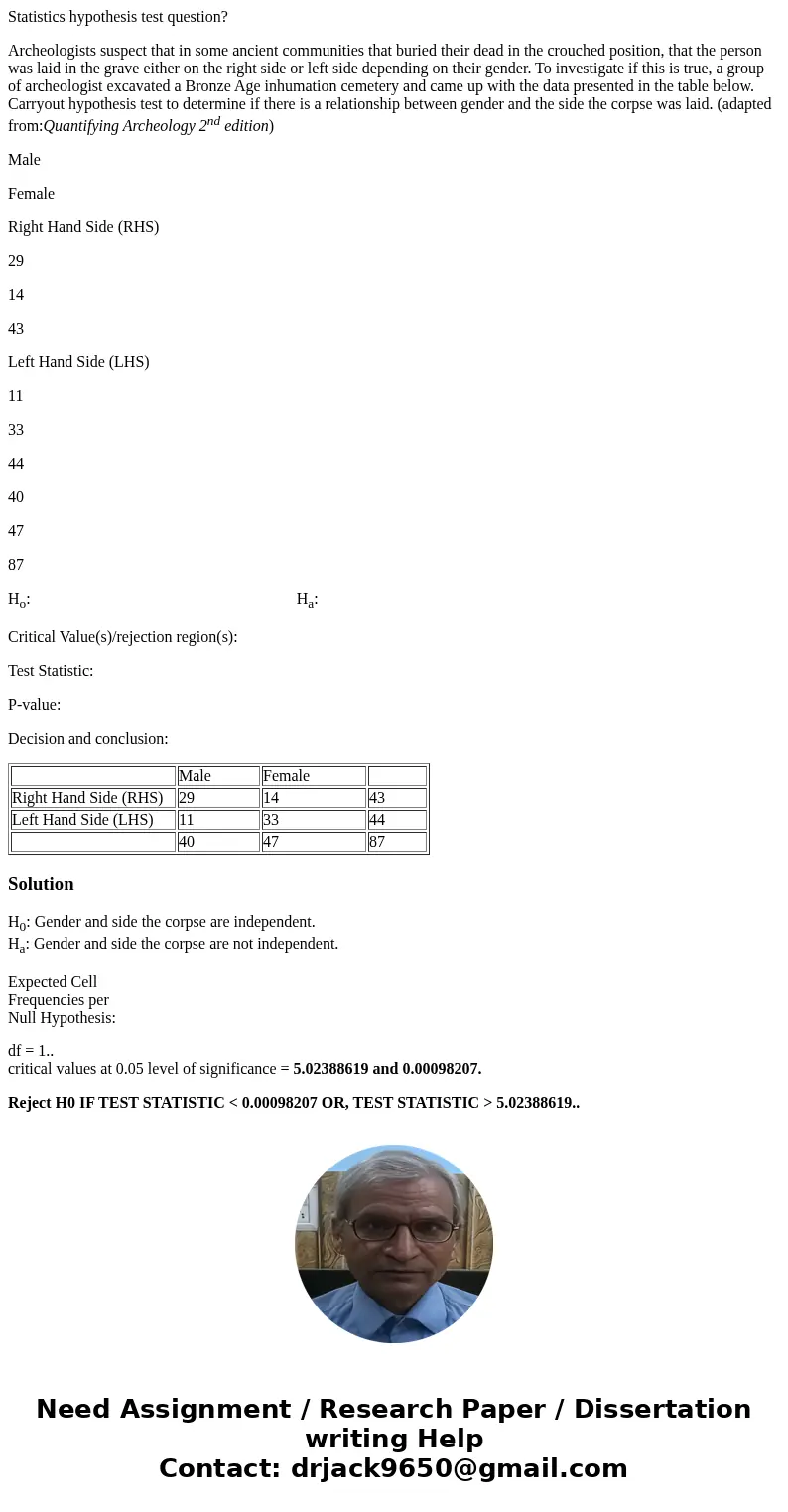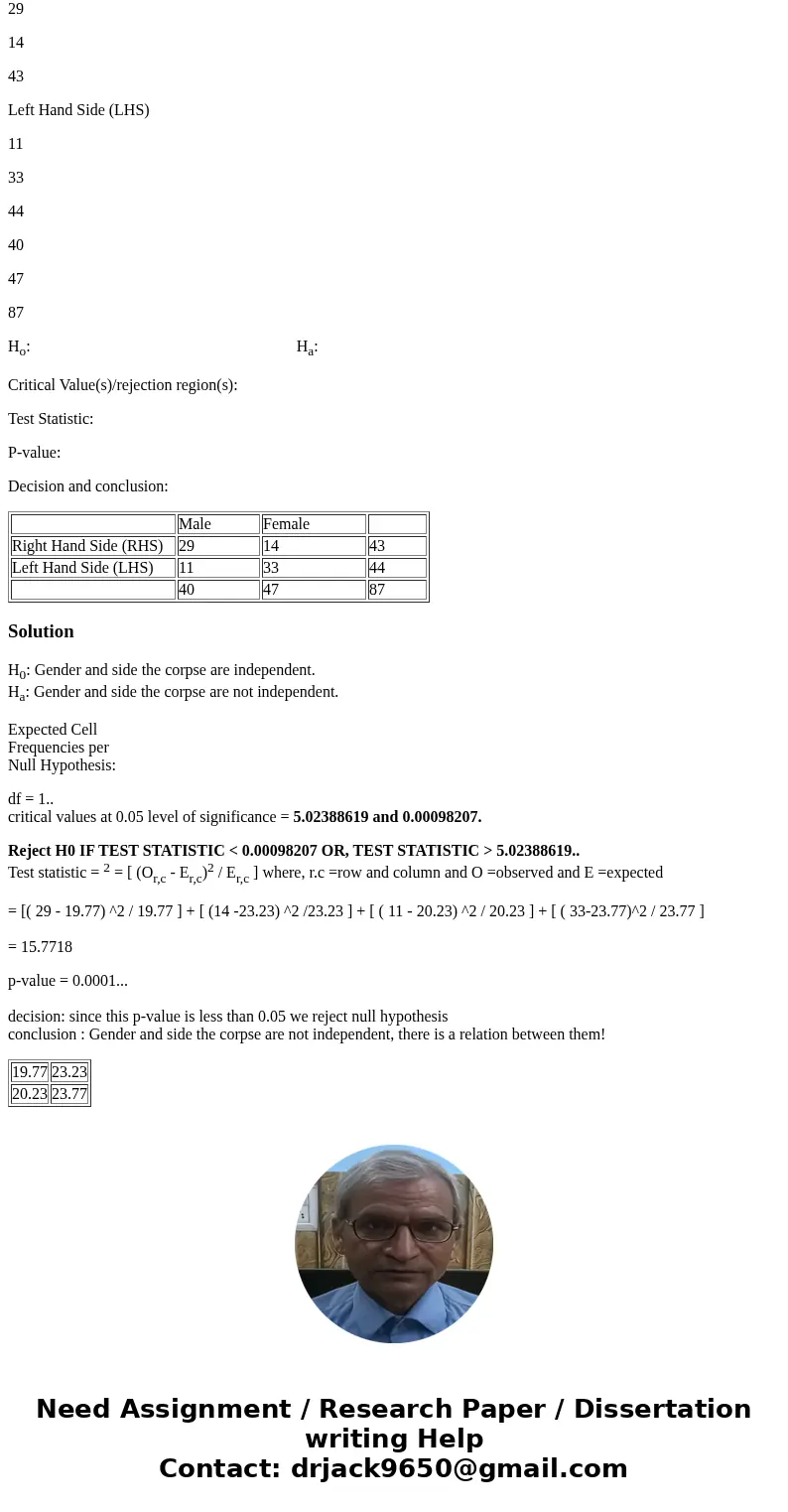Statistics hypothesis test question Archeologists suspect th
Statistics hypothesis test question?
Archeologists suspect that in some ancient communities that buried their dead in the crouched position, that the person was laid in the grave either on the right side or left side depending on their gender. To investigate if this is true, a group of archeologist excavated a Bronze Age inhumation cemetery and came up with the data presented in the table below. Carryout hypothesis test to determine if there is a relationship between gender and the side the corpse was laid. (adapted from:Quantifying Archeology 2nd edition)
Male
Female
Right Hand Side (RHS)
29
14
43
Left Hand Side (LHS)
11
33
44
40
47
87
Ho: Ha:
Critical Value(s)/rejection region(s):
Test Statistic:
P-value:
Decision and conclusion:
| Male | Female | ||
| Right Hand Side (RHS) | 29 | 14 | 43 |
| Left Hand Side (LHS) | 11 | 33 | 44 |
| 40 | 47 | 87 |
Solution
H0: Gender and side the corpse are independent.
Ha: Gender and side the corpse are not independent.
Expected Cell
Frequencies per
Null Hypothesis:
df = 1..
critical values at 0.05 level of significance = 5.02388619 and 0.00098207.
Reject H0 IF TEST STATISTIC < 0.00098207 OR, TEST STATISTIC > 5.02388619..
Test statistic = 2 = [ (Or,c - Er,c)2 / Er,c ] where, r.c =row and column and O =observed and E =expected
= [( 29 - 19.77) ^2 / 19.77 ] + [ (14 -23.23) ^2 /23.23 ] + [ ( 11 - 20.23) ^2 / 20.23 ] + [ ( 33-23.77)^2 / 23.77 ]
= 15.7718
p-value = 0.0001...
decision: since this p-value is less than 0.05 we reject null hypothesis
conclusion : Gender and side the corpse are not independent, there is a relation between them!
| 19.77 | 23.23 |
| 20.23 | 23.77 |


 Homework Sourse
Homework Sourse